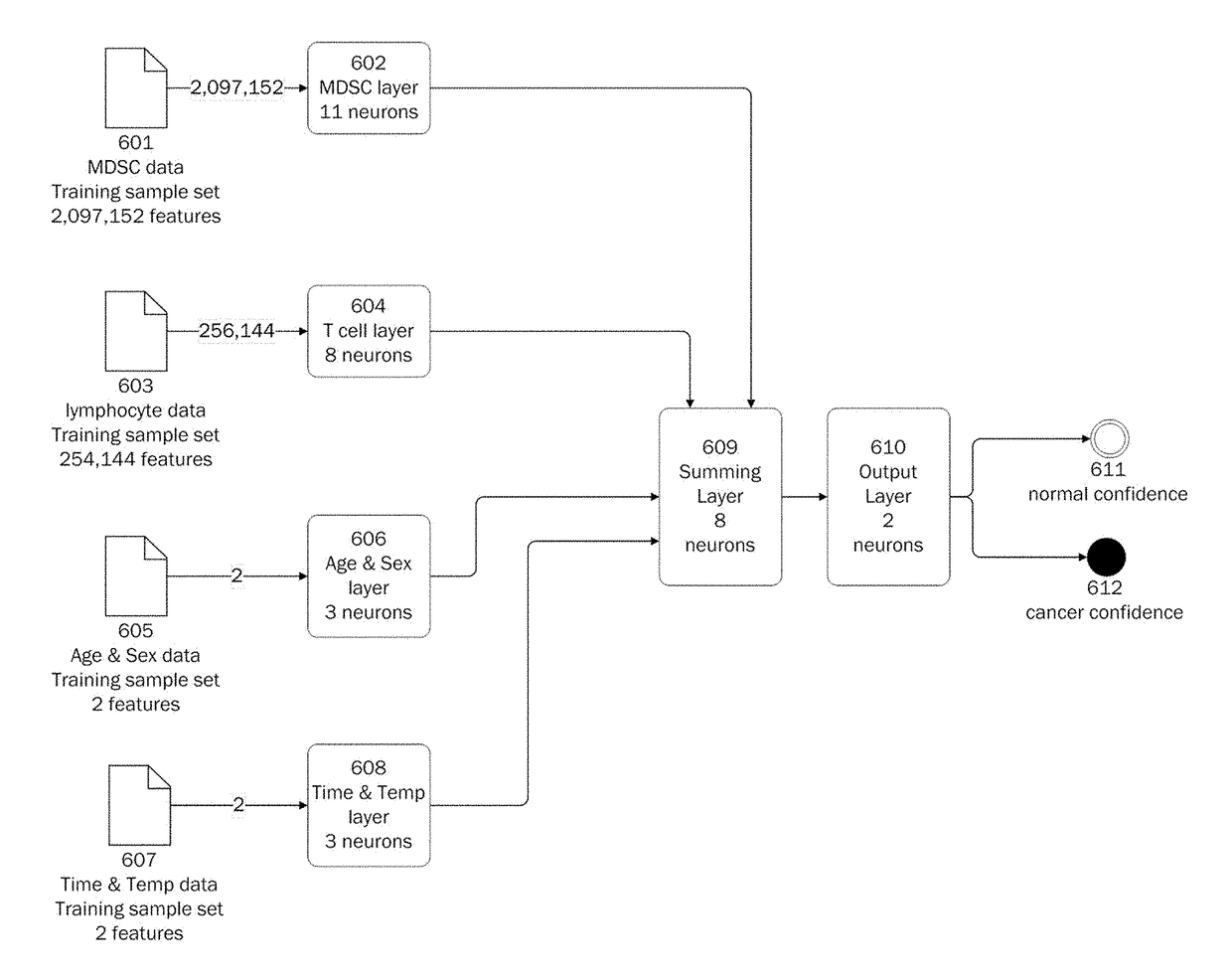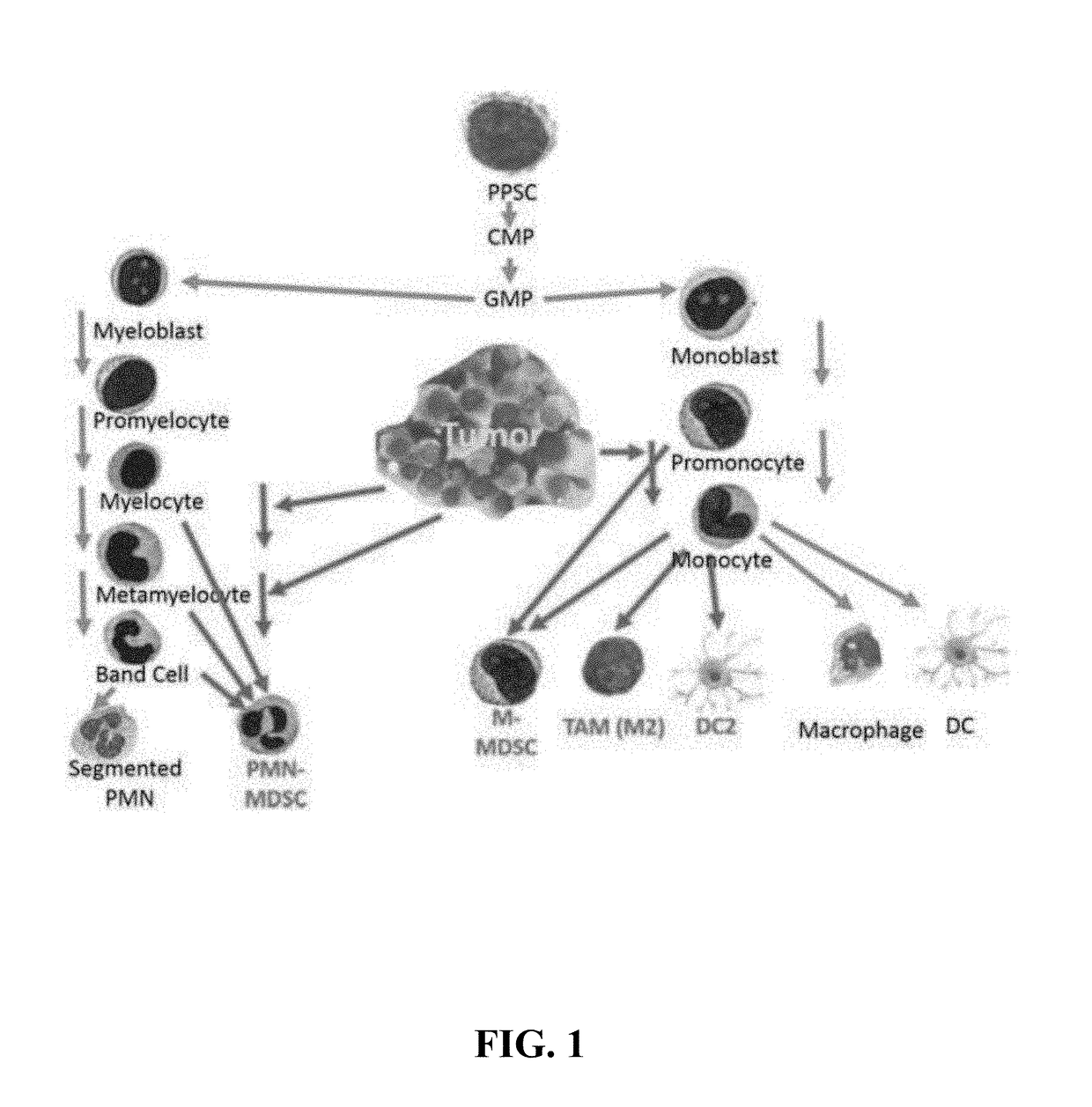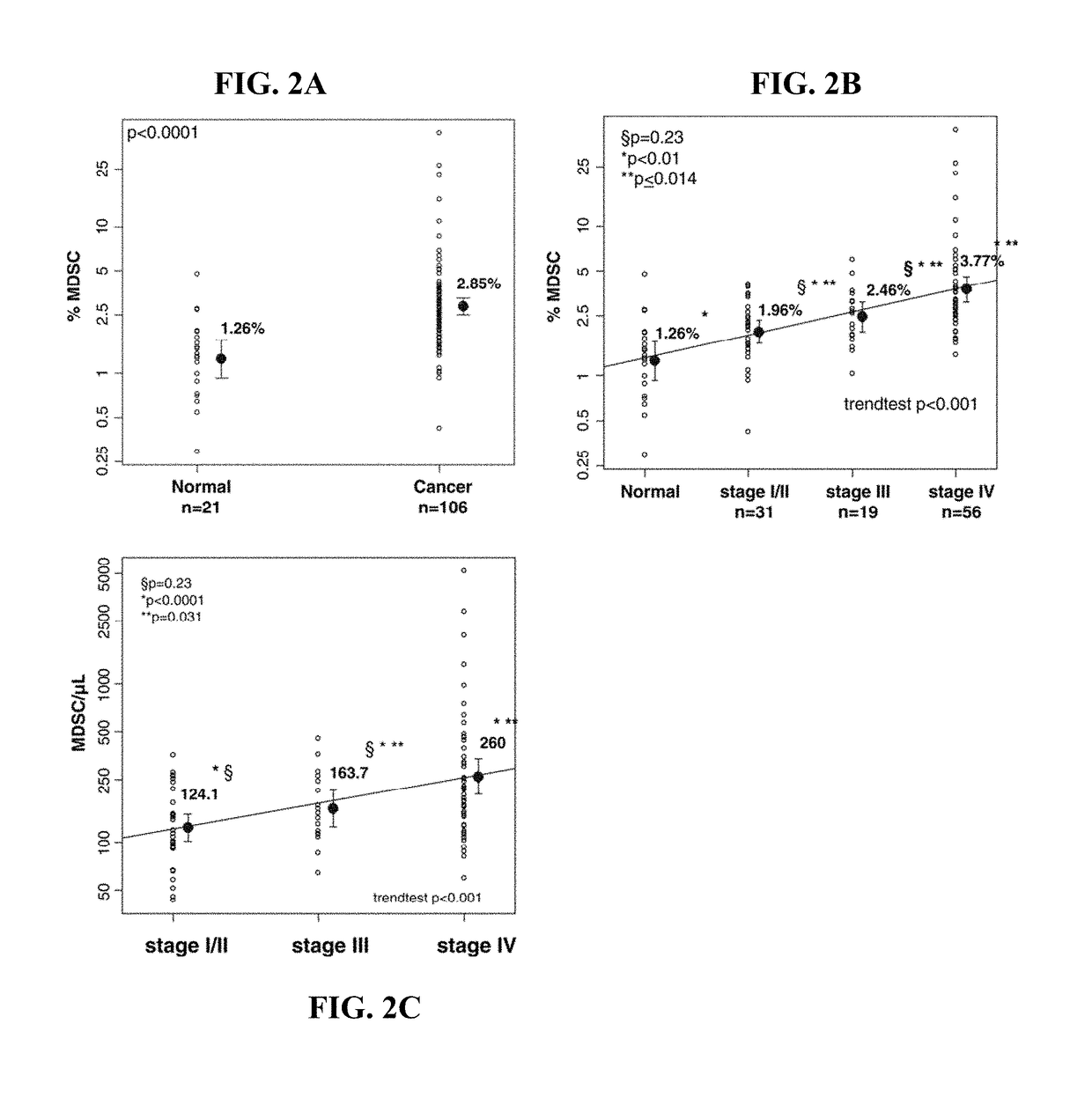Methods for using artificial neural network analysis on flow cytometry data for cancer diagnosis
a flow cytometry and artificial neural network technology, applied in the field of cancer diagnosis by using artificial neural network analysis on flow cytometry data, can solve the problems of generating numerous false positives and negatives, unable to detect early, and unable to accurately predict the effect of cancer treatment progress
- Summary
- Abstract
- Description
- Claims
- Application Information
AI Technical Summary
Benefits of technology
Problems solved by technology
Method used
Image
Examples
example 1
MDSC Detection
[0317]Populations of MDSCs are identified in patients with cancer by flow cytometry and convoluted neural networks.
[0318]A peripheral blood sample from a patient with cancer is taken. The blood sample is centrifuged to pellet the cells. The cells are resuspended to a concentration of 107 cells / mL (cells per mL) in Phosphate Buffer Solution (PBS).
[0319]Cells are then labeled with anti-human monoclonal antibodies. Antibodies that are used include anti-lineage-FITC (fluorescein isothiocyanate), including anti-CD3, -CD14, -CD16, -CD19, -CD20 and -CD56, anti-CD33-PE, anti-HLA-DR-ECD, anti-CD11b-PE-Cy5, anti-CD14-PE, anti-CD15-PE-Cy5, anti-CD33-PE-Cy7. Cells are then analyzed by flow cytometry with at least 4×104 events acquired for analysis.
[0320]Following the initial FSC / SSC discrimination, the gate is set on DR− / LIN− cells. Subpopulations are then gated to identify MDSCs, including CD14−, CD11b+, CD15+, CD66+, CD14+, CD15−, and their combinations.
[0321]The Matlab 2016b ma...
example 2
MDSC Detection with Recombinant Antibodies
[0327]Blood samples were collected from tumor bearing and non-tumor bearing individuals. Each blood sample was processed and prepared for flow cytometry analysis; this includes being stained with recombinant monoclonal antibodies conjugated to different fluorophores. Four panels were used, and the panels included:
[0328]Panel 1: Peripheral Blood Mononuclear Cell Staining for MDSC
[0329]Panel 2: Peripheral Blood Mononuclear Cell Staining for Lymphocytes
[0330]Panel 3: Whole Blood Staining for MDSC for MDSC
[0331]Panel 4: Whole Blood Staining for MDSC for Lymphocytes
[0332]Prior to analyses by the flow cytometer, the four panels were processed for staining with antibodies. The recombinant monoclonal antibodies used in the staining process for Panel 1 and Panel 3 include: recombinant PE anti-human CD3, recombinant APC-Vio770 anti-human CD14, recombinant PE-Vio770 anti-human CD15 (SSEA-1), recombinant PE-Vio615 anti-human CD16, recombinant VioBright ...
PUM
 Login to View More
Login to View More Abstract
Description
Claims
Application Information
 Login to View More
Login to View More - R&D
- Intellectual Property
- Life Sciences
- Materials
- Tech Scout
- Unparalleled Data Quality
- Higher Quality Content
- 60% Fewer Hallucinations
Browse by: Latest US Patents, China's latest patents, Technical Efficacy Thesaurus, Application Domain, Technology Topic, Popular Technical Reports.
© 2025 PatSnap. All rights reserved.Legal|Privacy policy|Modern Slavery Act Transparency Statement|Sitemap|About US| Contact US: help@patsnap.com



